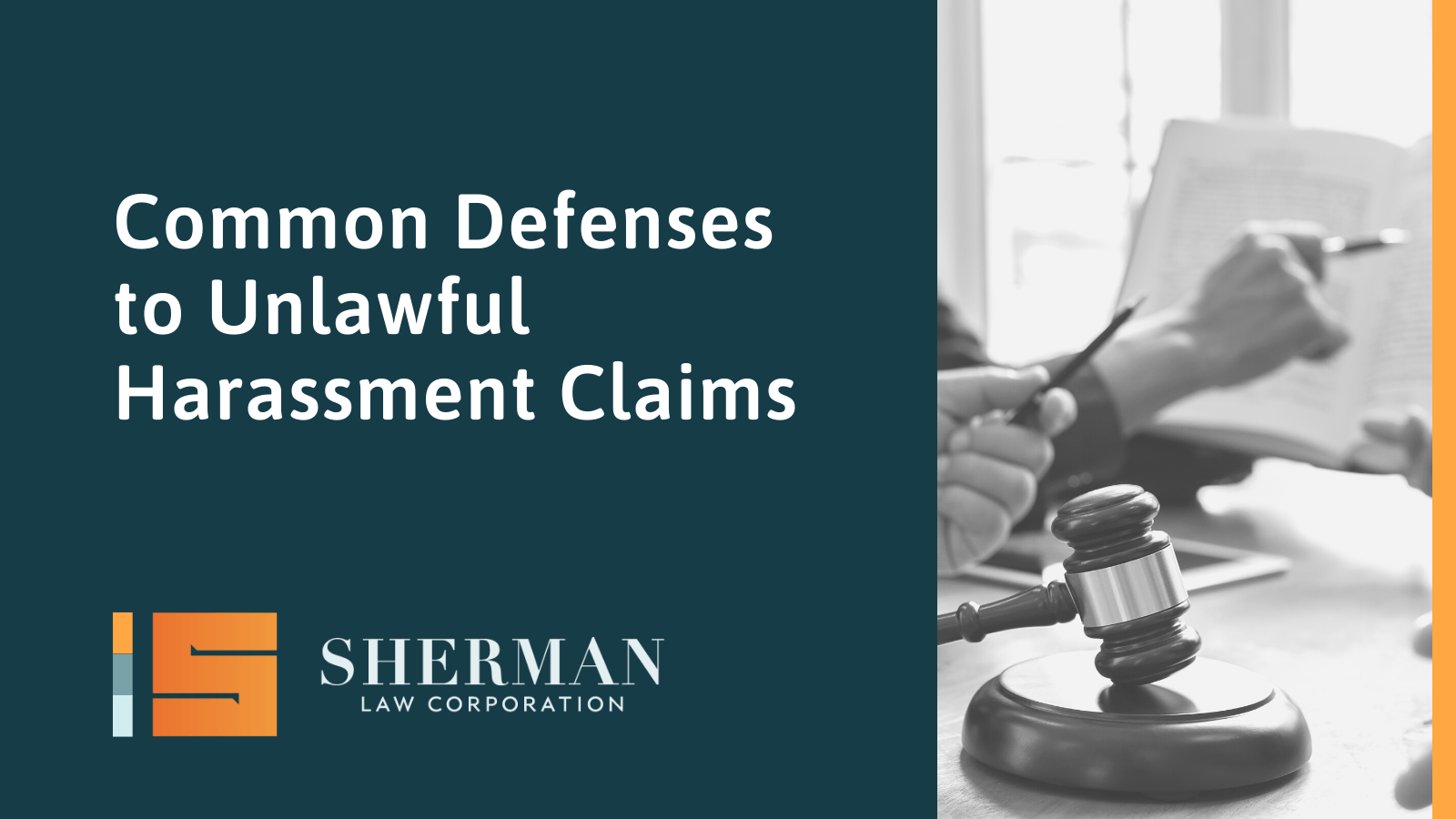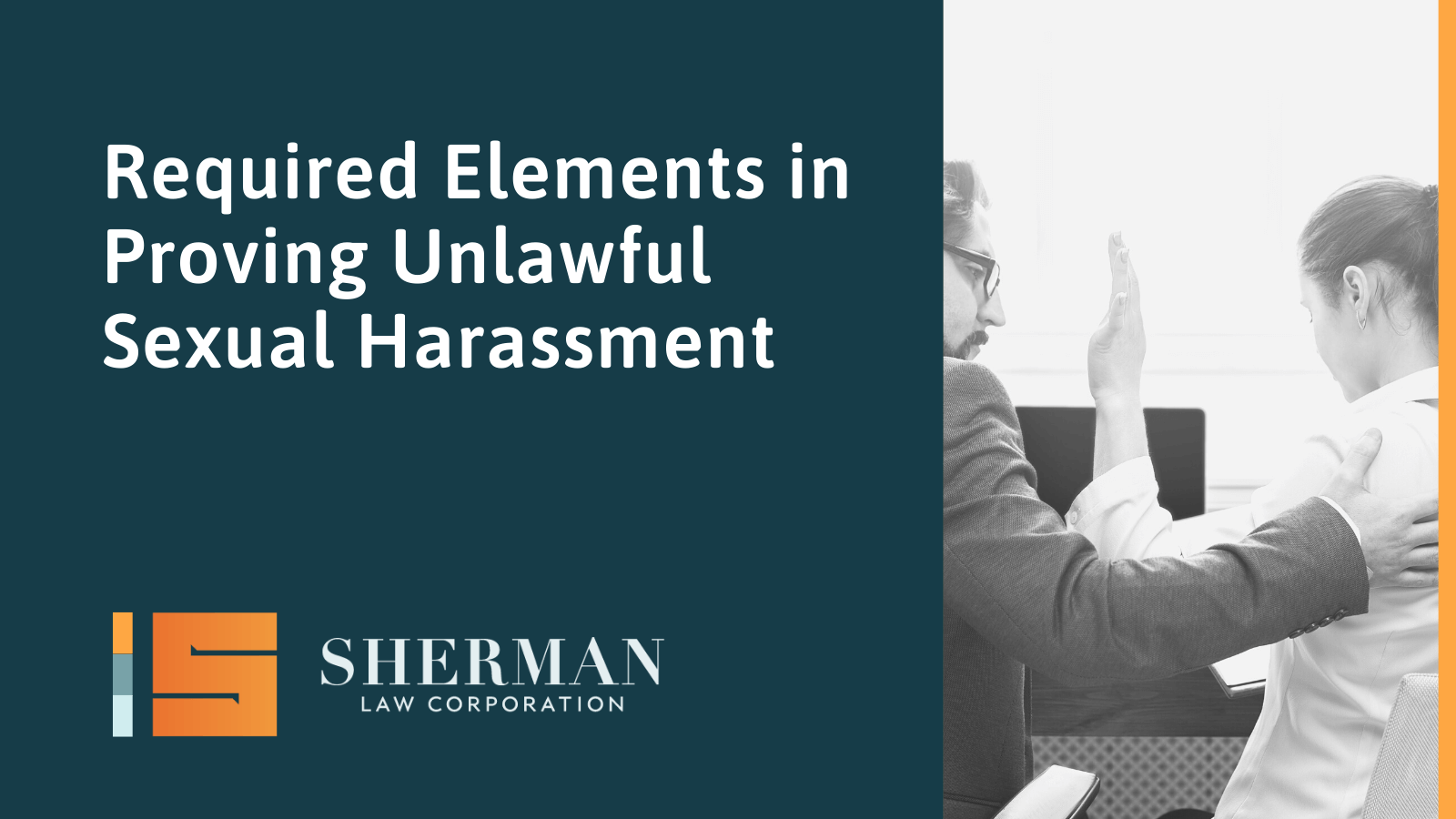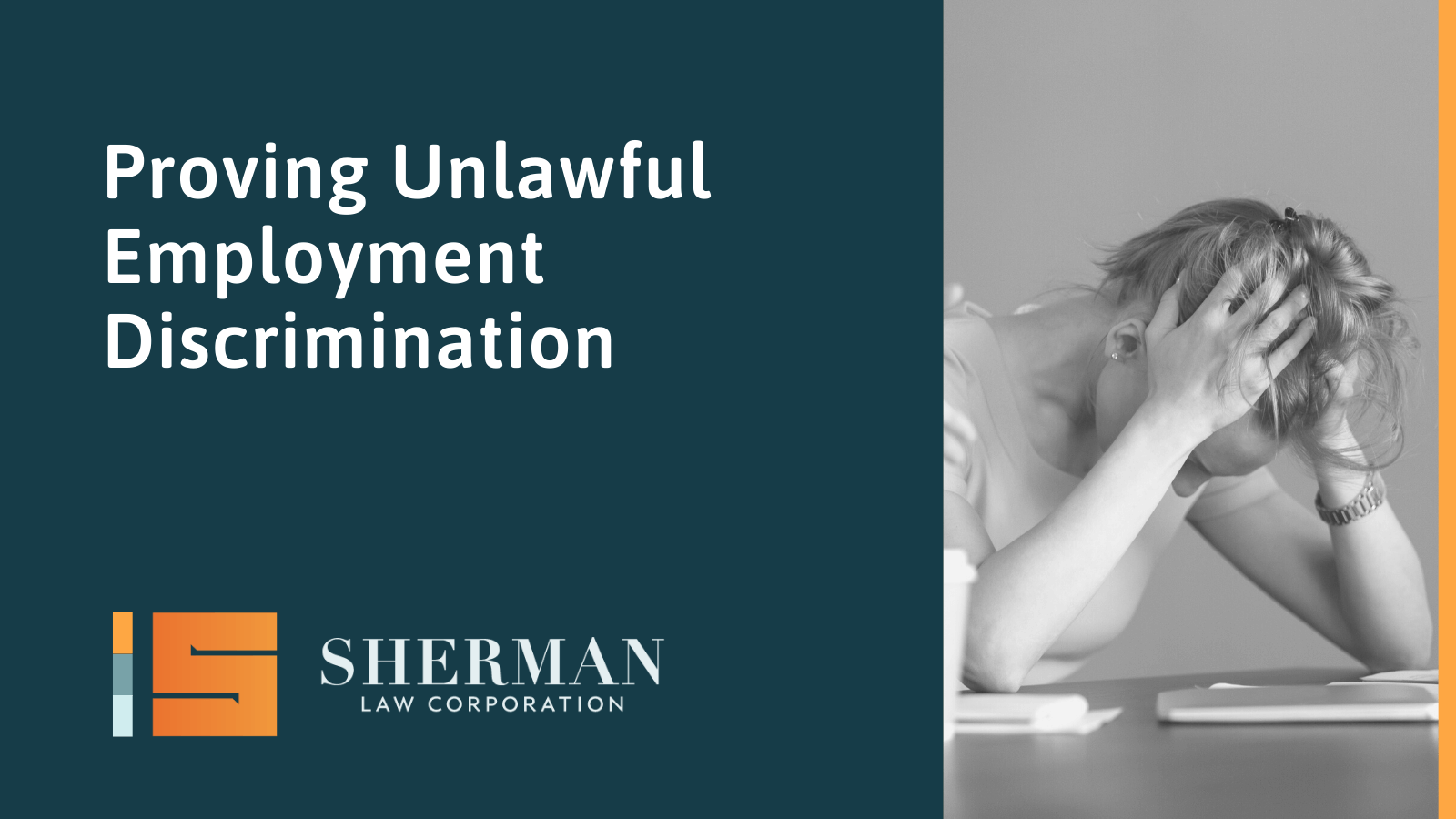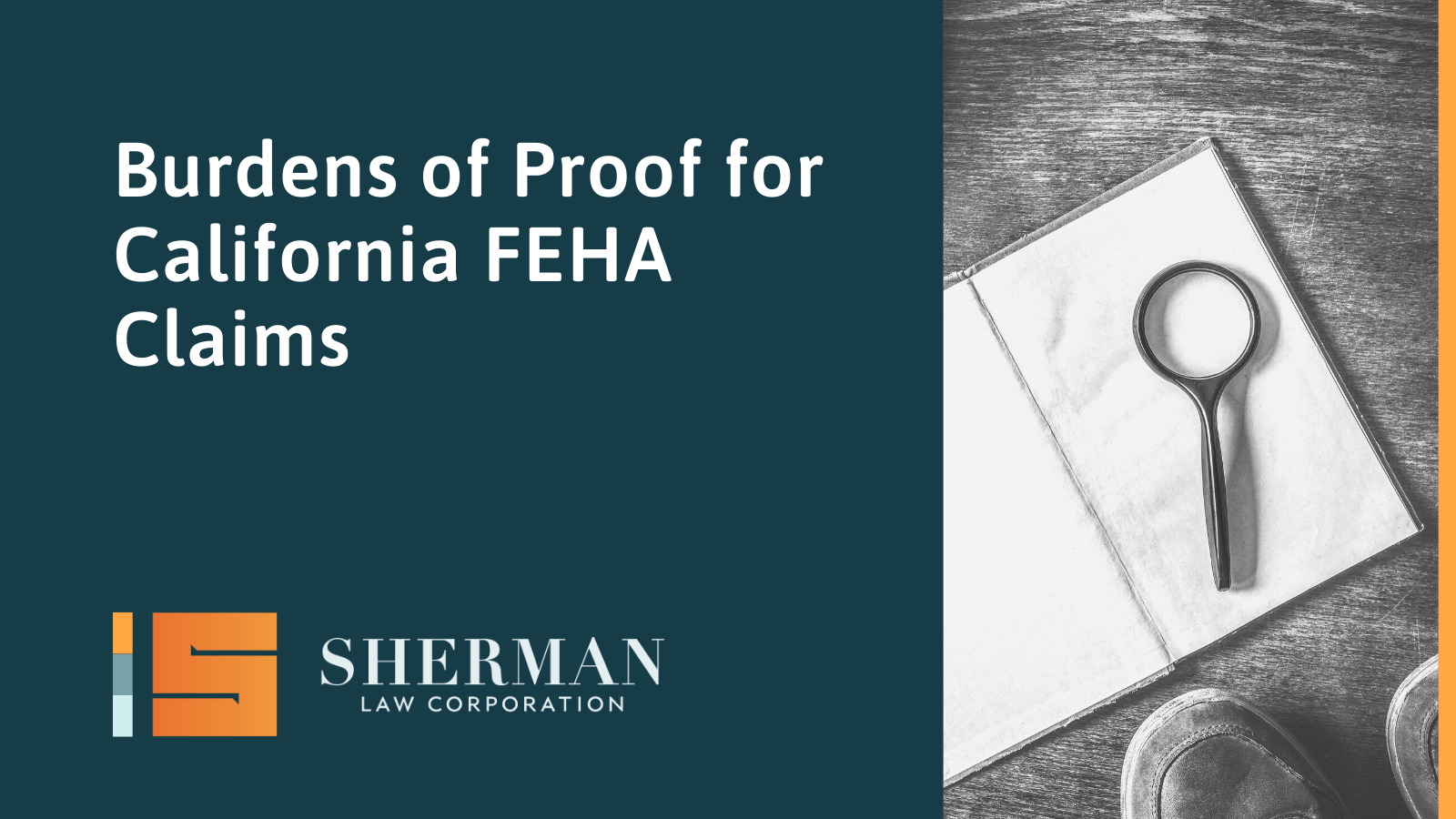
Common Defenses to Unlawful Harassment Claims in California
California employers are not without recourse when employees claim unlawful harassment. The law sets a high standard for what conduct constitutes workplace harassment and discrimination.
Sherman Law Corporation is well-versed in the complexities of unlawful harassment claims in California. Lisa Sherman, a dependable advocate at the firm, provides detailed guidance and support to employers facing these issues. She focuses on crafting strong defense strategies for businesses. But before discussing these defenses, it’s crucial to understand what counts as unlawful harassment under California law.
What Defines Unlawful Harassment in California?
In accordance with the Code of Civil Procedure section 527.6, California’s civil harassment statutes characterize “harassment” as involving:
- Acts of unlawful violence, such as assault, battery, or stalking, OR
- A credible threat of violence, AND
- Such violence or threats must significantly intimidate, trouble, or harass the individual, with no legitimate justification for these actions.
Unlawful workplace harassment occurs when someone experiences negative, unwanted, or harmful behavior because of their age, gender, race, culture, or disability. It’s important for both employees and employers in California to know about the strong legal actions and protections against harassment at work. This helps keep the workplace safe and respectful for all.
Workplace Harassment Laws in California
California aims to maintain a safe and respectful work environment through various laws. Here’s a simplified overview:
- The California Fair Employment and Housing Act (FEHA) makes it illegal to harass workers based on protected traits like religion, race, or gender, among others.
- Title VII of the Civil Rights Act of 1964, a federal law, similarly bans harassment for these reasons and is applicable to companies with 15 or more workers.
- California Government Code Section 12940, part of FEHA, specifically deals with harassment at work, outlining what constitutes harassment and what employers must do to prevent it.
- Laws AB 1825 and AB 2053 require businesses with at least 50 employees to provide sexual harassment training to both managers and staff.
- SB 1300 broadens the scope of anti-harassment protections in California, making it easier for victims to make their case and restricting some defenses by employers.
- SB 1343 mandates sexual harassment prevention training for businesses with five or more employees, detailing specific training elements for different roles.
- Under the California Code of Regulations (CCR), Title 2, Section 11014, further details on harassment covered by FEHA are given, along with training to both managers and staff.
These laws are designed to shield employees from harassment and obligate employers to foster a safe and respectful workplace.
In California, employers held responsible for workplace harassment could incur monetary fines, compensation for affected individuals, a requirement to conduct anti-harassment training, and possible legal proceedings.
How Can Employers Investigate Workplace Harassment Claims in California?
Before filing a harassment claim in California, it’s useful to understand the two main types of workplace harassment as defined by the California Fair Employment and Housing Act (FEHA):
- Quid pro quo harassment: This occurs when a boss or supervisor offers job perks like a raise or promotion in return for sexual favors.
- Hostile Work Environment: This type involves repeated or severe negative behavior towards someone based on their religion, race, age, or other personal characteristics, and it must be significant to be illegal.
The law is designed to protect employees from real harassment while avoiding claims over minor or one-time incidents. Protection under this law also extends to job applicants, volunteers, interns, and contractors, highlighting its wide coverage.
The DFEH guidance document outlines policies on how to conduct harassment investigations that comply with the law. According to the guidance, the employer should:
- A supervisor or HR consultant should conduct a detailed interview with the employee who reported the harassment.
- Clearly explain the accusations to the accused, allowing them to respond and thoroughly investigate the situation.
- Interview any relevant witnesses.
- Use non-leading, open-ended questions in interviews.
- Review all potentially relevant documents and electronic data.
- Collect any additional important evidence.
- Analyze all evidence objectively, using the “more likely than not” standard to determine truth.
- If harassment or policy breaches are found, implement appropriate corrective measures, which could include disciplinary actions, termination, redefining expectations, training with professional counselors, or other steps to stop the harassment.
- Share investigation results, employer responses, and new expectations with everyone involved.
- Respond immediately to any reports of physical harassment or threats to ensure workplace safety.
Generally, a complainant has one year from the date of the alleged incident to file a workplace harassment complaint with the California Department of Fair Employment and Housing (DFEH).
Common Defenses to Unlawful Harassment Claims in California
The good news is that the employer typically raises many affirmative defenses when it files an answer to a civil complaint (i.e., lawsuit) that, if proven, will defeat one or more claims alleged by an employee, in whole or in part.
The most common affirmative defenses include, but are not limited to:
- The statute of limitations bars lawsuits filed more than one year after the Department of Fair Employment and Housing (DFEH) issued a right-to-sue letter.
- Failure to exhaust administrative remedies bars California Fair Employment and Housing Act (FEHA) claims not filed with the DFEH within one year of the unlawful act (with some exceptions for continuing violations).
- The complainant has no standing; that is, they are not an applicant or employee of the employer or another covered entity.
- The alleged conduct was not severe or pervasive enough to create an abusive, hostile work environment.
- The alleged conduct was not unwelcome.
- The alleged conduct did not create an objectively hostile work environment to a reasonable person with the same protected characteristics in the position of the complainant.
- The alleged conduct did not create a subjectively hostile work environment for the complainant.
- The complainant was not harmed.
- The alleged harassing conduct was not a substantial factor in causing the complainant’s harm.
- The complainant’s actions are barred, in whole or in part, by the doctrine of avoidable consequences.
Contact Us at Sherman Law Corporation Today
California’s laws protect employees from workplace harassment and discrimination more strongly than federal laws. This means employers in California might have to deal with complaints made to the Department of Fair Employment and Housing (DFEH) or the U.S. Equal Employment Opportunity Commission (EEOC). A lawyer experienced in harassment and discrimination defense can answer your queries and concerns and help businesses like yours prevent and deal with unlawful complaints.
For more information on protecting your company from unlawful harassment claims, feel free to contact our office at (323) 488-2087.




